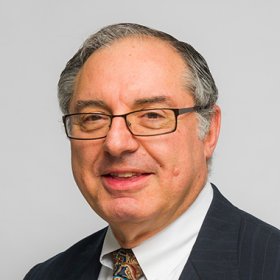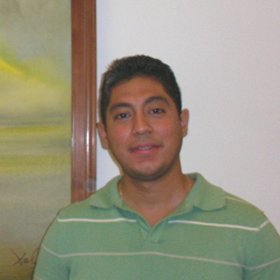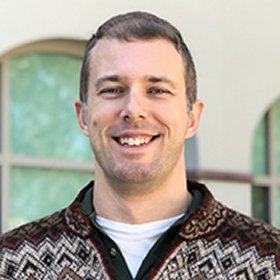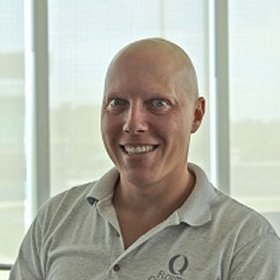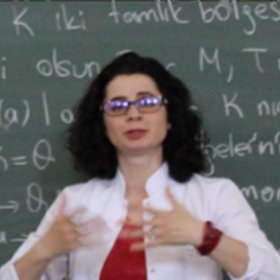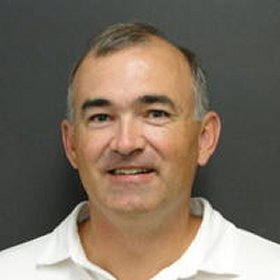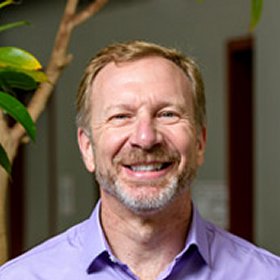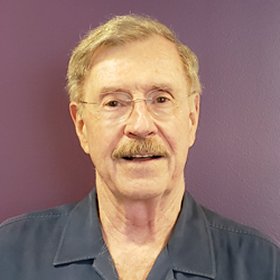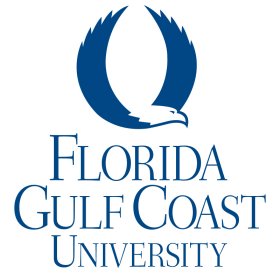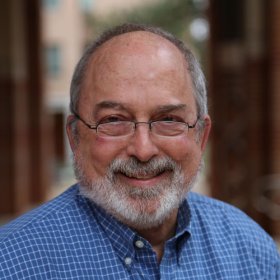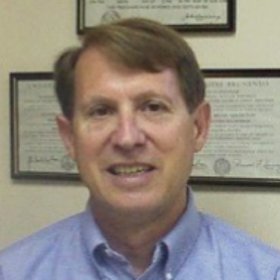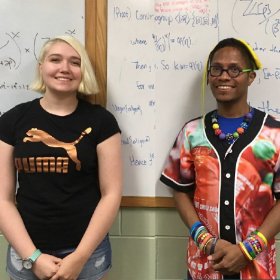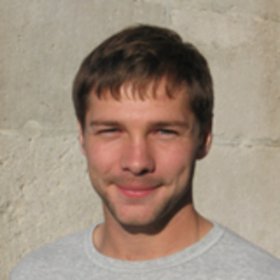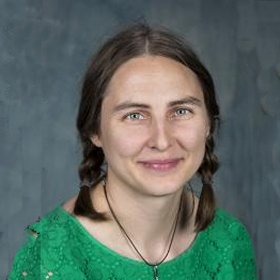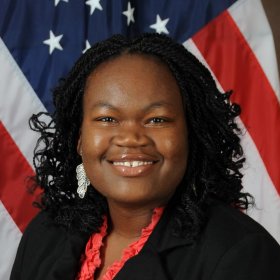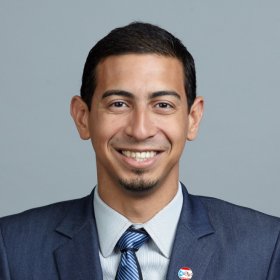The Mathematics Department Colloquium is a forum in which speakers from other universities and FGCU math faculty give talks about mathematics, statistics and related fields. The talks are broadly aimed and accessible by undergraduate students and faculty from other disciplines. There are typically four seminars each semester and there is no cost to attend. For information beyond that provided below, please contact the colloquium committee chair.
Recent and Upcoming Colloquiums

Dr. Margherita Maria Ferrari, University of South Florida
Combinatorial Strategies for Designing DNA Nanostructures
Thursday, March 31, 2022. Time: 10:45-11:45 am. BHG 215
ABSTRACT Web POSTER REGISTER
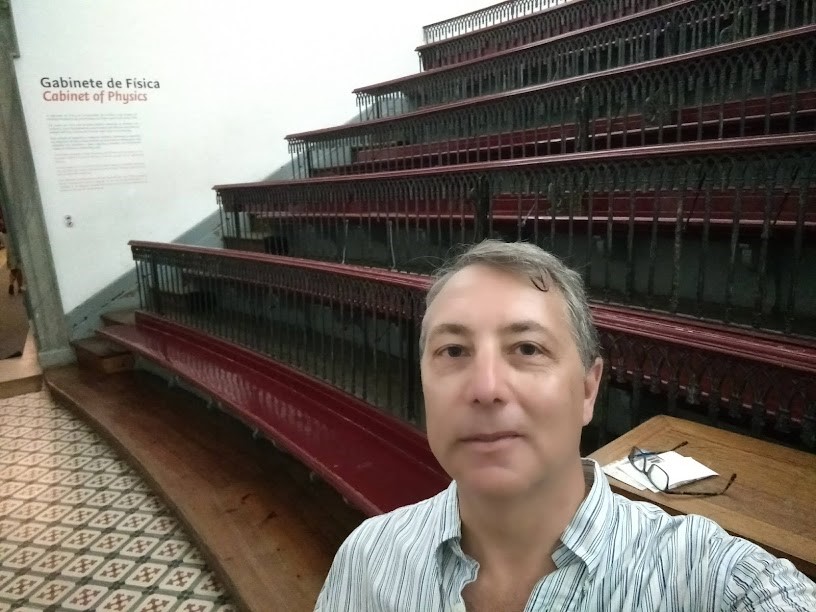
Dr. Evan Haskell, Nova Southeastern University
How Prey Defense Patterns Predator-Prey Distribution
Friday, April 1, 2022. Time: 10:30-11:30 am. Marieb 200
ABSTRACT WEBPOSTER REGISTER
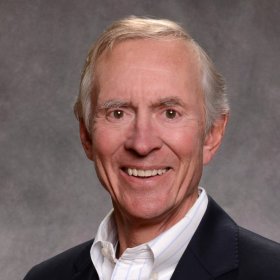
Mr. Wayne Fisher and Associates
Alex Robels, Joe Logan and Aaron Brunson
Introduction to the Field of Actuarial Science
Thursday, April 7, 2022. Time: 10:45-11:45 am. BHG 215
ABSTRACT WEBPOSTER Registration
If you would like to receive notification via email about upcoming event dates and times, please contact Dr. AlBERTO CONDORI.
-
Past Colloquiums
Toggle More Info
Committee Members
Alberto Condori
Co-Chair - Colloquium Committee
Tel: 239-590-1458
Email: acondori@fgcu.edu
Faysal Chowdhury
Co-Chair - Colloquium Committee
Tel: 239-590-7297
Email: fchowdhury@fgcu.edu
Brian Johnson
Member - Colloquium Committee
Tel: 239-590-1284
Email: bpjohnson@fgcu.edu
Mehdi Hasan
Member - Colloquium Committee
Tel: 239-590-7678
Email: mhasan@fgcu.edu
Thuan Huynh
Member - Colloquium Committee
Email: thuynh@fgcu.edu
Dr. Jing Chen
Application of Dynamic System on Some Ecological and Epidemiological Models
In studying some biological problems, the descriptive features of biological systems are delivered by the differential equations which can be studied quantitatively by both analytical and computational methods. The obtained results can be interpreted back to the biological level, then explain some phenomena and also provide some strategies.I will introduce some applications of differential equations and dynamic system in both ecological and epidemiological models. First, we will the nonlinear dynamics can help to understand how seasonal harvesting affects ecological system. Second part will focus on the application of mathematics and statistics in infectious diseases.
Dr. Kathy Clark
Leveraging Primary Historical Sources for the Teaching and Learning of Undergraduate Mathematics
For the last six years, the NSF-funded TRansforming Instruction in Undergraduate Mathematics via Primary Historical Sources (TRIUMPHS) project has developed, classroom-tested, and disseminated classroom
materials which we call Primary Source Projects (PSPs). PSPs are classroom instructional
materials which contain excerpts from one or several primary historical sources, student
tasks designed to illuminate the mathematical concepts represented by the sources,
and secondary narrative by the project author to replace or support the related content
of undergraduate mathematics curriculum. To date, the TRIUMPHS project has produced
approximately 80 PSPs.
In this talk, I will share some of the “history” of the TRIUMPHS project and examples from its collection of PSPs. As well, I will discuss some of the investigations we have conducted during the first five years of the grant project, with a focus on what primary historical sources contribute to the teaching and learning of mathematics.
Dr. Shivaji Rathnasingham
Will be published soon
Mr. Wayne Fisher, Mr . Alex Robles, Mr. Joe Logan, and Aaron Brunson
An Introduction to the Field of Actuarial Science
In this talk, Mr. Fisher and his associates will provide an overview of the field of actuarial science. They will discuss what actuaries do, why becoming an actuary is an excellent career choice, how one learns actuarial skills and earns professional credentials, and how the actuary profession is changing to incorporate predictive analytics and data science. They will then speak about their work experiences and discuss some of the challenges new actuaries face in the first 18 months of the job.
Mr. Fisher Is A Board Member And Audit Committee Chair For The Zurich American Insurance Companies In North America. Prior To Retirement, He Was The Group's Chief Risk Officer, Chief Actuary, Head Of Global Specialties, And Head Of Underwriting For Global Corporate Customers. He Is A Fellow Of The Casualty Actuarial Society, An Associate Of The Society Of Actuaries, A Chartered Enterprise Risk Analyst And A Member Of The American Academy Of Actuaries. Wayne Served On The Cas Board As President-elect, President And Past President And Board Chair.
Associates
| Alex Robles Actuarial Analyst | Health & Benefits |
Joe Logan Director | Health & Benefits |
| Aaron Brunson ASA, MAAA Associate Director, Health and Benefits Actuarial Consultant |
Zoom Conference Information
Please make sure your Zoom account displays your first and last names. Colloquium moderators will not be able to add you to the virtual conference until your account displays the first and last names.
https://fgcu-edu.zoom.us/j/95015552747?pwd=SkN3SVRIM2Rwb0RkWlBWWWNjd2Fodz09
If you have any connection issues please contact Dr. Brian Johnson (239-590-1284) or Dr. Menaka Navaratna (239-590-7544)
Mr. Jerome Tuttle
Mr. Tuttle is a retired actuary and is currently an online adjunct instructor of math at Rocky Mountain college of art & design. Prior to retirement, he was senior vice president & pricing actuary for a renaissance reinsurance company in New York. He is a fellow of the casualty actuarial society, a member of the American Academy of Actuaries, and a chartered property and casualty underwriter. He has spoken at math teacher conferences on topics such as copyright and teaching, computer simulation, and the mathematics of love.
Data science and Actuaries
Data science is a rapidly growing area of study, drawing on both math/statistics and computer science. Actuaries, the mathematicians of the insurance industry, have latched onto data science and are finding interesting uses in their work. The speaker will share some ways actuaries are using data science techniques to find new insights in their data.
Mr. Jerome Tuttle
Mr. Tuttle is a retired actuary and is currently an online adjunct instructor of math at Rocky Mountain college of art & design. Prior to retirement, he was senior vice president & pricing actuary for a renaissance reinsurance company in New York. He is a fellow of the casualty actuarial society, a member of the American Academy of Actuaries, and a chartered property and casualty underwriter. He has spoken at math teacher conferences on topics such as copyright and teaching, computer simulation, and the mathematics of love.
Data Science Aboard the Titanic
Data Science Aboard the Titanic, which uses the Titanic passenger list and two data science techniques to attempt to predict who survived.
Dr. Erik Lundberg,
Perimeter, Torsionalrigidity, and Isoperimetrics and Wichesin Operator Theory
Given a necklace placed on a table what shape encloses the largest possible area? Among all drums with a given surface area, what shape produces the lowest fundamental frequency? Given a bar with a uniform cross-section of fixed area, for what shape of the cross-section will the bar have the greatest resistance to twisting? The answer to each of these questions (as well as several others) is a circle, and the statements can be expressed concisely using isoperimetric inequalities. I will discuss this classical topic, and then I will describe how some of these inequalities have reappeared in the modern area of Mathematics known as Operator Theory.
Dr. Peng Feng
Lyme Disease, Rash and Mathematics
In this talk, I will introduce the basic principles behind mathematical immunology. Then we will discuss a few temporal and spatiotemporal models that describe how our immune system responds to various pathogens. We also establish a PDE chemotaxis model for the innate response to Borreliaburgdorferi, the causative agent of Lyme disease. We illustrate the key factors which lead to the characteristic skin rash that is often associated with Lyme disease. We finish the talk with a few comments regarding modeling in immunology.
Dr. Richard B. Goldstein
Dynamic Models of the Oral Glucose Tolerance Test
The Oral Glucose Tolerance Test is used as a diagnostic tool to determine if a patient is normal or a type I or II diabetics. After testing, some patients are found to exhibit malabsorption of glucose or effects from prescription drugs. In the course of developing this dynamic model that shows the interaction of glucose, insulin, and other hormones in the patient several areas of mathematics are utilized. These include: differential equations, statistical hypothesis testing, numerical methods of solving differential equations, curve-fitting, and optimization techniques. Dynamic models are developed and then compared with respect to fit and statistical significance of the parameters used. The quality of the models was verified using real data from over 100 patients.
Dr. Alberto Condori
Normal Matrices and Distance
In many areas of pure and applied mathematics, the spectrum of a matrix (or operator)
plays an important role. For instance, when dealing with linear systems of differential
equations, the spectrum of a matrix allows one to describe all of their solutions.
In Linear Algebra, it is well-known that the spectrum of a normal matrix can be used
to recover the norm of its resolvent. One may ask: Can the spectrum of any matrix
recover the norm of its resolvent? In this talk, I will answer this question and establish
a number of consequences related to norm behavior, pseudospectra, and unitary equivalence.
Dr. Alexander Diaz-Lopez
Peaks and Descents of Permutations
Given a permutation \( \pi=\pi_1 \pi_2 \cdots \pi_n \in \mathfrak{G}_n \) , we say an index \(i\) is a peak if \(\pi_{i-1}<\pi_{i}>\pi_{i+1}\). Let \(P(\pi)\) denote the set of peaks of \(\pi\). Given any set \(S\) of positive integers, define \(P_s(n) = \{ \pi \in \mathfrak{G}_n : P(\pi)=S\} \). In 2013, Billey, Burdzy, and Sagan showed that for all fixed subsets of positive integers \(S\) and sufficiently large \(n\), \(|P_s(n)| = p_s(n)2^{n-|S|-1}\) for some polynomial \(p_s(x)\) depending on \(S\). They conjectured that the coefficients of \(p_s(x)\) expanded in a binomial coefficient basis centered at \(max(S)\) are all nonnegative. In this talk, we will share a recursive formula for \(p_s(n)\) we use to prove that their "positivity conjecture" is true. It remains an open question to find a combinatorial meaning of these non-negative coefficients. Near the end of the talk, we will discuss various current developments regarding this topic, in-cluding some similar questions replacing "peaks" by "descents." No prerequisites.
Dr. Bethany Kubik
Network Science
On a hot summer day in 1996, a power line in Oregon drooped heavily with the heat and sagged, hitting a tree and grounding the line. Within a few hours of that single power line going down, a blackout engulfed eleven U.S. states and two Canadian provinces. Networks are all around us. The way that they behave affects us on many levels from the daily ads we see, to market forces, to terrorist events, to our electrical grid. In this talk, we learn what networks are and some of the current science being done to research their structure.
Dr. Chuck Lindsey
Counting and Calculating in Ancient and Medieval Europe
While advanced mathematics in Europe flourished, withered, and was eventually reborn in the 16th century, the more mundane arts of counting, calculating, and accounting continued as tools of commerce and administration from classical times onward. In this talk we will give an overview of what we know of the number systems, notations, and calculating methods used by various European societies to do the mathematics necessary to keep track of accounts and to manage estates, beginning with classical Greece and continuing up to the early Renaissance. While the mathematics will be elementary, the various methods to be discussed are interesting and not widely known or appreciated, and in some cases are still not fully understood.
Dr. Candice Price
Applications of Knot Theory: Using Knot Theory to Unravel Biochemistry Mysteries
Although knots have been used since the dawn of humanity, the mathematical study of
knots is only a little over 100 years old. Not only has knot theory grown theoretically,
the fields of physics, chemistry and molecular biology have provided many applications
of mathematical knots. In this talk, I provide an overview of some connections between
knot theory and DNA-protein interaction, outlining specifics of the biological mechanisms
of DNA replication while providing an overview of related knot invariants.
Ms. Emily Gullerud and Dr. aBa Mbirika
An Euler Phi Function for the Eisenstein Integers and Some Tantalizing Applications
The Euler phi function on a given integer \(n\) yields the number of positive integers less than and relatively prime to \(n\). Equivalently, it gives the order of the group of units in the quotient ring \(\mathbb{Z}/(n)\) for a given integer \(n\). We generalize the Euler phi function to the Eisenstein integer ring \(\mathbb{Z}[\rho]\) where \(\rho\) is the primitive third root of unity \(e^{2\pi i/3}\) by finding the order of the group of units in the ring \(\mathbb{Z}[\rho]/(\theta)\) for any given Eisenstein integer \(\theta\). As one application, we prove that the celebrated Euler-Fermat theorem holds for the Eisenstein integers. We also discuss the structure of certain unit groups \((\mathbb{Z}[\rho]/(\gamma))^\times\) where \(\gamma\) is prime in \(\mathbb{Z}[\rho]\) and \(n \in \mathbb{N}\), thereby generalizing well-known results of similar applications in the integers and some lesser known results in the Gaussian integers.
Dr. Erik Insko
Bounds on The Roots of Peak and Descent Polynomials
In 2012, Billey, Burdzy, and Sagan showed that given a positive integer \(n\) and a subset \(S \subset \{1,2, ... , n\}\) the number of permutations of length \(n\) with peak set \(S\) is \(2^{n-|S|-l}p_s(n)\), where ps is a polynomial (now called the peak polynomial corresponding to \(S\). In 2014, Billey, Fahrbach, and Talmage conjectured that the complex roots of peak polynomials of degree \(m — 1\) all lie within a circle of radius \(m\), and they have real parts greater than —3. In this talk I will define descent polynomials, share a conjecture that the roots of descent polynomials of degree \(m — 1\) satisfy the same bounds as those identified by Billey, Fahrbach, and Talmage, and discuss a number of partial results in support of these two conjectures. In the process of explaining these conjectures, I will also share some experiences from my time working students on research at FGCU.
Dr. Brian Johnson
Non-Euclidean Geometry for Babies (and grown ups)
It is well known that a unique circle can be circumscribed around any triangle in
Euclidean geometry. The construction relies on a point called the circumcenter. While
this same construction is not always possible in hyperbolic geometry, we’ll see that
using the familiar Intermediate Value Theorem, we can show a (hyperbolic) triangle
can be circumscribed by an ellipse.
This is joint work with Dr. Lorna Wenzel
Dr. Canan Unlu
A Historical Perspective Involving Both Experimental and Mathematical Evidence for the Existence of Solitary Waves and Solitons
The nonlinear evolution equations (NLEEs) are broadly used to formulate mathematical models of nonlinear wave phenomena appearing in the field of science and engineering. When we want to understand the physical mechanism of phenomena in nature which are described by nonlinear evolution equations, exact solutions for the NLEEs have to be explored. In order to better understand the inner infrastructure of the phenomena described by the NLEEs, solitary wave solutions play an imperative role. Solitons are special kinds of solitary waves.
Dr. Galen Papkov
Investigating the Effect of an Interprofessional Education Experience on Critical Thinking
Upper level undergraduate courses typically cater to a single major or multiple ones that are similar These environments do not mimic the real world, where individuals will likely need to interact with people from other disciplines Three 3000 level courses in health science, business, and bioengineering were used in this study where all students tackled a real world problem on their own and then again in randomly generated, multi major teams Critical thinking performance was found to be impacted by the interprofessional education experience however, effects differed by major
Dr. David Scott
A Statistician’s View of Uncertainty
Modern Data Science Relies On Ever More Complex Models To Understand Data. Presenting The Confidence Of Model Predictions Is A Grand Challenge. It Is Much More Than Inventing A New Language Expressing Uncertainty. Faced With Potentially Hundreds Or Thousands Of Parameters, Scientists Often Perform Sensitivity Analyses In Order To Assess The Robustness Of Model Predictions. Such One-at-a-time Calculations Are Useful But Limited. Visualization Techniques Can Provide A Fuller Picture, But The Availability Of Immersive Technologies Is Still Expensive And Not Commonplace (Yet). We Examine Some Simple Polling, Survey, And Regression Data And Discuss The Presentation Of Uncertainty. Avenues For Research Are Described.
Dr. Peng Feng
How Mathematics Can Help Win the War Against Cancer
In this talk, I will present a few mathematical models that aim to help us better
understand how our immune system interacts with cancer cells. In particular, we focus
on a model that studies the role of regulatory T cells. One recent advance in the
field of regulatory T cells reveals that they play a vital role during immunotherapy.
For example, a higher ratio between regulatory T cells and effector T cells within
tumor tissue is associated with worse prognoses in many cancers, including ovarian
cancer (Leffers et al., 2009), lung cancer (Tao et al., 2012), and glioblastoma (Sayour
et al., 2015). On the other hand, the tug of war between regulatory T cells and effector
T cells for interleukin-2 (IL-2) may chisel one’s immune response against cancer.
In this talk, we demonstrate mathematically, for the first time, that the initial
ratio between regulatory T cells and effector T cells does impact the tumor recurrence
time. We also demonstrate the effectiveness of utilization of IL-2 to flip the outcome
of immunotherapy, providing further evidence that it may be clinically viable to modulate
the consumption of IL-2 by regulatory T cells.
Dr. Richard Goldstein
Normal Reference Interval
The normal reference interval or range is among the most widely used medical decision-making
tools used to determine whether an individual is healthy or not. Both low and high
extremes are often warning signs of disease. The distributions are often skewed which
requires statistical analysis, locating various percentiles, curve fitting, transformations,
elimination of outliers, and dissecting mixed data.
Various skewed distributions are considered using Gram-Charlier expansions, the Pearson family of distributions as well as the Johnson family of distributions. Real patient data such as Creatinine, A1C/Glycated Hemoglobin, Lactate Dehydrogenase (LDH), and Cholesterol are used as examples.
Dr. Alberto Condori
Polynomially Isometric Matrices in Low Dimensions
Given a square matrix \(A\), there is no ambiguity in what “squaring a matrix” should mean; \(A^2\) is the product of \(A\) with itself. This simple notion can be extended in a natural way to non-negative integer powers and so to more general functions of matrices. In applications, however, the need arises to estimate and compare the size of such functions of matrices. In this talk, we discuss the functional calculus of a matrix, discuss its importance, and introduce the notion of “polynomially isometric” as a way to compare matrices. Moreover, we describe our quest to obtain easy-to-check criteria for recognizing when matrices are polynomially isometric.
Dr. Mike Weimerskirch
The Colley Matrix Method
The NCAA has an interest in ranking its 353 Division I Men’s Basketball teams from
top to bottom. TheColleyMatrixMethod is one such system. The story begins in 18th
century France with some probability theory, then encounters calculus and linear algebra.
The method is simple enough that you can run it on your laptop, yet yields results
that match other popular polls.
Dr. Jacob Duncan
Mathematics for Sustainability
This talk centers around the course mathematics for sustainability which develops
and applies mathematical concepts and tools to quantitatively explore real-world,
topical problems pertaining to environmental and social sustainability. Topics are
motivated by exciting hands-on experiences – experiments, demonstrations, outdoor
data collection excursions – from relevant stem fields.
Dr. Edward Olmstead
An Optimal Strategy for Blackjack
The presentation begins with an introduction to the casino rules for playing the game
of Blackjack. Then follows a detailed outline and discussion of an optimal strategy
for playing Blackjack. This strategy reduces the casino advantage to less than one-percent,
which makes Blackjack the preferred game of chance for those who seek a gambling experience.
Attendees will receive a copy of the basic strategy outline. The presentation will
conclude with a discussion of card counting and how it influences the optimal strategy.
Dr. Kurt Bryan
Picture Perfect: The Mathematics of JPEG Image Compression
Good image compression algorithms are one reason we don't have to spend half our lives waiting for web browsers to load pictures. The most popular of these image compression formats is the Joint Photographic Experts Group (JPEG) standard. In fact, JPEG compression can result in files that are 10 or more times smaller than they would otherwise be, with little loss in image quality. The heart of JPEG compression is the Discrete Cosine Transform (DCT), an example of one of the most important techniques in all of mathematics---the decomposition of a signal or function into a sum of orthogonal ``basis vectors.'' We'll look at this technique in the context of image compression, with many examples!

